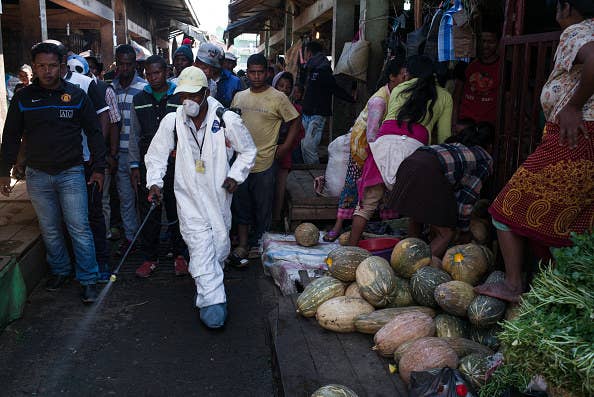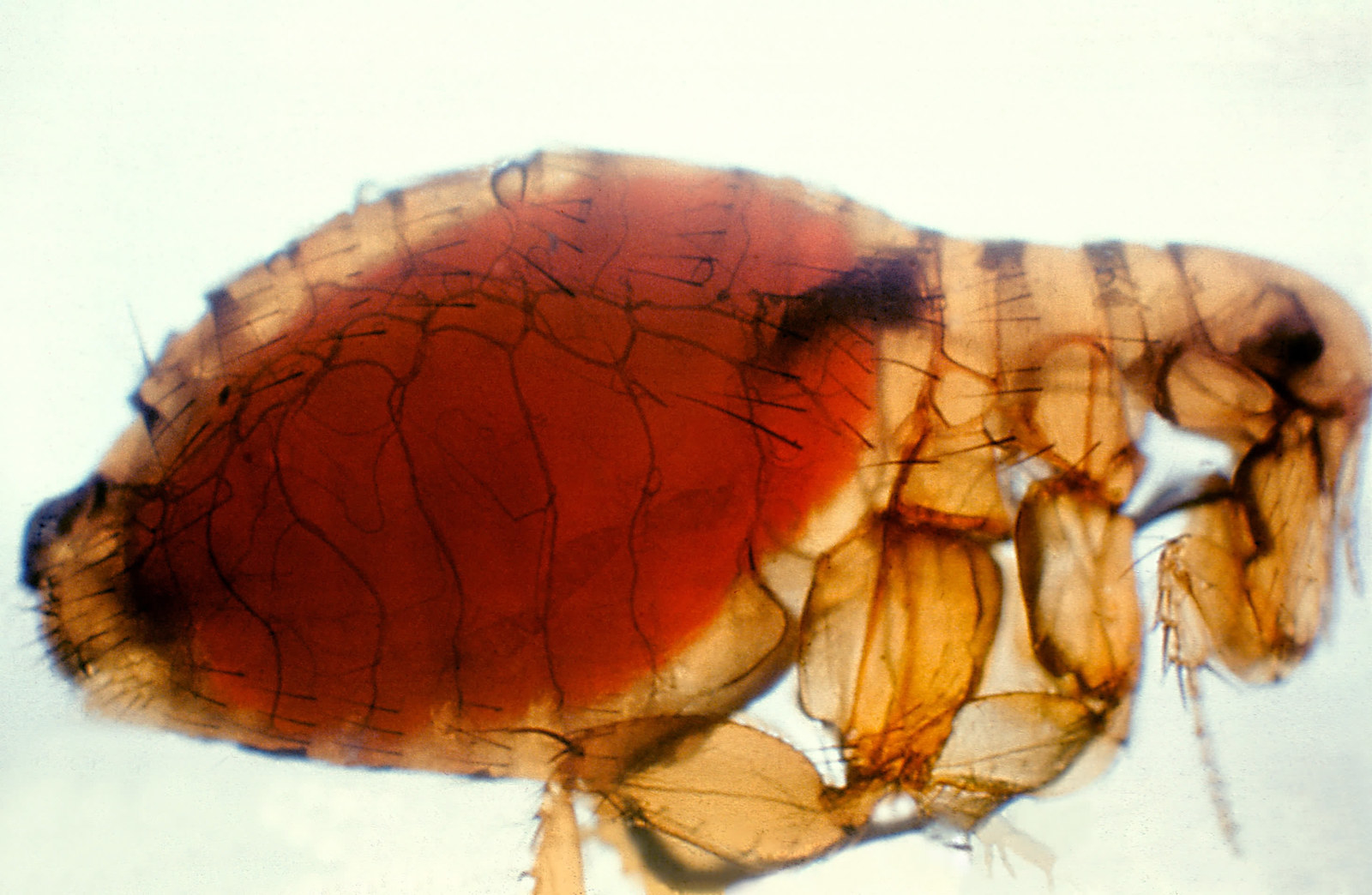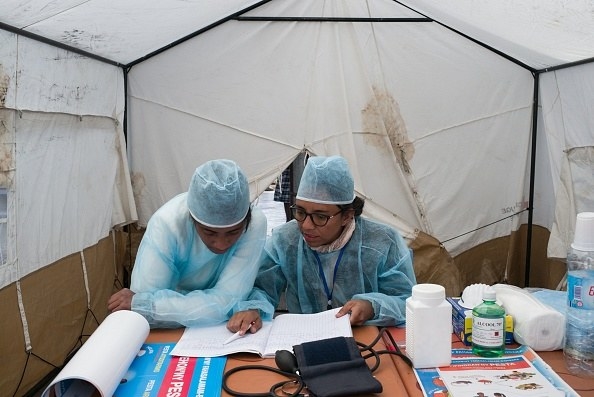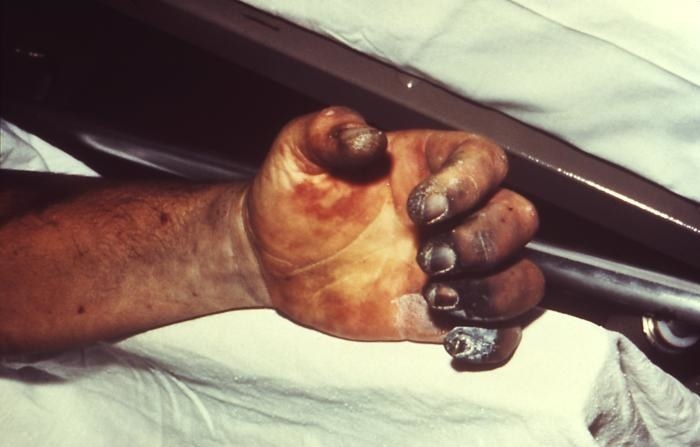An outbreak of plague in Madagascar has infected an estimated 1,192 people and killed 124 since August.

While some cases occur every year in Madagascar, which is located off the southeast coast of Africa in the Indian Ocean, this may be one of the country’s deadliest plague seasons yet. The number of cases since August is already three times higher than the average annual total.
It’s an unusual outbreak because approximately 67% of those cases are pneumonic, which is the most serious form of the plague, according to a report published last Monday by the UN Office for the Coordination of Humanitarian Affairs and Madagascar's National Office for Risk and Disaster Management. That’s the type that can be spread from person to person, rather than via the bite of infected fleas or contact with an infected animal.
Yes, we’re talking about THE plague — the same disease known as the "Black Death," which wiped out 60% of Europe's population in the 14th century. It's still around.
If you thought the plague was an antiquated disease only represented by paintings in history books, you were wrong. It's still around and infects people today, although you hear less about it because it's relatively rare nowadays and it can be treated with antibiotics.
There are still about 1,000–2,500 cases of the plague each year around the world, mostly in Africa, Central Asia, India, the northern part of South America, and parts of the southwestern United States, according to the US Centers for Disease Control and Prevention (CDC). There are an average of seven cases of plague in the US each year, but "it's rare for there to be any fatalities," said Joseph Hinnebusch, PhD, an expert on plague at the National Institute of Allergy and Infectious Diseases.
The plague is an infectious disease caused by the bacterium Yersinia pestis, which is usually spread to humans through the bite of an infected flea.

These fleas carry the bacteria from an infected rodent and then pass it to humans by biting their skin. In the United States, the bacteria have been linked to prairie dogs, rock squirrels, and other rural rodent populations in the Southwest. Sometimes the plague is spread through contact with infected animals and, less commonly, it is spread from human to human, as in Madagascar. There are actually three types of plague: bubonic, pneumonic, and septicemic.
Bubonic plague is the most common form of plague, and it's the type that’s spread by the bite of an infected rodent flea carrying the bacteria, Hinnebusch says. It causes a fever, headache, chills, and swollen, painful lymph nodes (buboes) that can turn into open sores filled with pus. If it’s not treated rapidly with antibiotics, it can spread in the body. "It can move to the blood, causing septicemic plague, or the lungs, causing pneumonic plague," Hinnebusch says.
Septicemic plague occurs when the bacteria enter the bloodstream, and it causes fever, extreme fatigue, stomach pain, hemorrhaging, and acral gangrene, which is a loss of blood flow and tissue death in the fingers or toes, which can cause the skin to turn black.
Pneumonic plague is the most virulent and serious form of plague. "It's spread from person to person through aerosolized droplets which are breathed in and cause primary pneumonic plague," says Hinnebusch. It can cause fever, headache, and chills, and also rapidly developing pneumonia, chest pain, and coughs that produce mucus or blood. It can develop from a case of bubonic plague or septicemic plague (the latter is very rare), Hinnebusch says, which is called secondary pneumonic plague because it spreads from elsewhere in the body, not from inhaling the bacteria.
While the plague is treatable with antibiotics, it is fatal in 30% to 100% of cases that aren’t treated, according to the World Health Organization.
The Madagascar outbreak is also unusual because it’s more widespread, more deadly, and affecting people in urban areas.

"It's not unprecedented at all for Madagascar to have plague; they've actually been responsible for most of the cases of plague in the world for the last couple of decades," Hinnebusch says. However, this year's outbreak is unusual in both the number of cases and also in the number of pneumonic plague cases, says Hinnebusch, because usually the majority of cases are bubonic. The Ministry of Public Health in Madagascar has set up crisis units in major cities to provide free treatment for all cases and raise awareness among the population.
According to the UN report, this plague season is also "uncharacteristic" because it began a month early; cases started popping up in August instead of September. Another thing that makes this outbreak unusual, according to the report, is the fact that it isn't restricted to rural areas. In fact, this outbreak has mostly affected urban centers of Madagascar, including the capital, Antananarivo, and the port city of Toamasina. "Many of the districts currently affected have no experience of the disease, which represents another challenge in addition to the difficulties in controlling the epidemic in urban areas," officials said in the report.
There is no vaccine or medicine that prevents plague that is sold in the US, according to the CDC. But there are treatment options available if you catch the infection early enough. "If the bubonic plague is treated with antibiotics, there's a relatively high success rate, but if it's left untreated for a week or so, it can cause septic or pneumonic plague and death," Hinnebusch says. Lab tests are required to confirm a diagnosis of plague.
However, pneumonic plague is a little different and it is known for causing rapid pneumonia and death. "The problem is you have to diagnose and start the treatment quickly because it's a rapidly progressing disease — with pneumonic, you only have a couple of days to diagnose and treat," Hinnebusch says. This is why early detection and treatment are so important. If you believe you have symptoms and live in an area where it is endemic or travel to an area where there is an outbreak, you should go to a doctor or your nearest health department immediately.
The CDC advises people traveling to and from Madagascar to take certain precautions to prevent the spread of the disease.

Outbreaks in urban areas are rare, according to the CDC, so the risk for travelers to areas where plague is endemic is generally low. But the CDC has issued a level 2 alert for Madagascar, which means travelers should practice "enhanced precautions for this destination,” due to the increased risk of plague. The CDC advises people to watch out for symptoms during and after traveling to Madagascar. If you do have any symptoms, you should seek medical care immediately and inform your provider about your travels.
Some steps you can take to avoid flea bites and plague infection include wearing protective clothing, using an insect repellent that protects against fleas (and contains at least 25% DEET), and avoiding contact with rodents and sick or dead animals. You should also avoid seriously ill people or anyone who is coughing up blood. Prevention is always important if you live in or travel to any area where plague is endemic — not just Madagascar.

